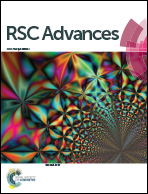Isocyanide and Meldrum's acid-based multicomponent reactions in diversity-oriented synthesis: from a serendipitous discovery towards valuable synthetic approaches†
Abstract
Multicomponent reactions, which lead to synthesis of target compounds with inherent molecular diversity, greater efficiency and atom economy, are single step types of reactions made from three or more reactants attract the attention of all chemists. The design and discovery of novel multicomponent reactions that are able to generate useful chemical products may be regarded as a preeminent topic in organic chemistry. In this context, isocyanide-based multicomponent reactions are one of the important branches of multicomponent reactions. This review covers and describes our serendipitous discovery of a new isocyanide and Meldrum's acid-based multicomponent reaction in 2001, which created a new vision in synthetic approaches and following contributions by others to the field since then. Isocyanide and Meldrum's acid are the basic components of these discovering multicomponent reactions and have opened new avenues to one-pot synthesis of numerous classes of pharmaceutically and industrially valuable heterocyclic and acyclic organic compounds, such as imino-furopyranones, coumarins, benzodiazepines, benzooxazepines, amidodiesters, functionalized triamides, succinimides, and malonamides, in a three- to six-component condensation reaction strategy.


 Please wait while we load your content...
Please wait while we load your content...